The European green crab, Carcinus maenas, is not a native U.S. species. It is found along the European coast and north Africa. Green crabs made their way to the USA in the mid-1800’s – probably in the water ballast tanks of ships.
I first saw a green crab in the Shark River in Avon, New Jersey. It was underneath the train bridge near route 35.
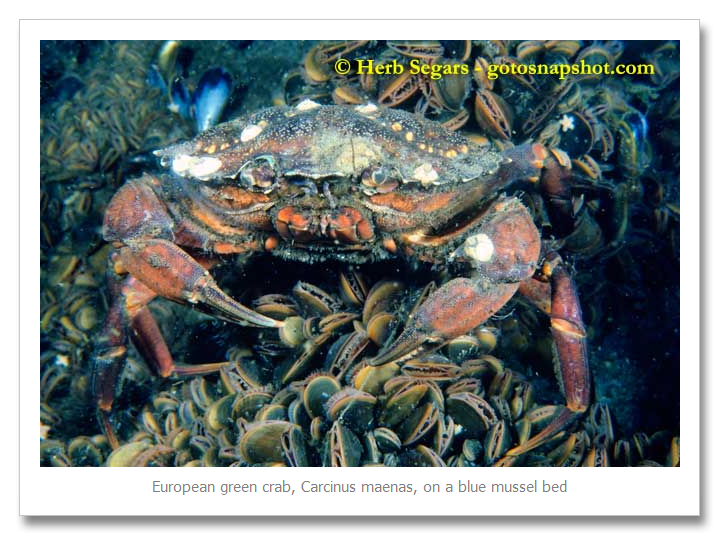
The area under the bridge is full of blue mussels, Mytilus edulis, which is a favorite food for the voracious green crab. A single crab can eat up to thirty small mussels a day. Considering that the green crab reaches a size of 2”-4”, that is some feat. It’s a wonder that they are not really fat. Green crabs will eat anything up to its own size or smaller. Crustaceans like young lobsters, small fish and other crabs are on that list. They are also excellent clammers, feasting on clams and oysters.
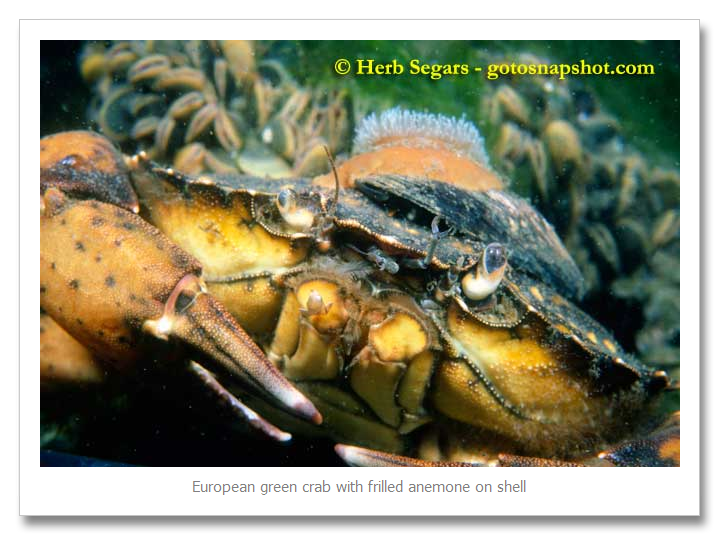
The crab shown above is a great example of an animal using other animals for camouflage. It has taken a blue mussel and a frilled anemone, Metridium senile, and placed it on the top of its shell. The two animals will attach to the crab’s shell and they will live together. The crab will supply food as a byproduct of sloppy eating and the mussel and anemone will provide camouflage to the crab.
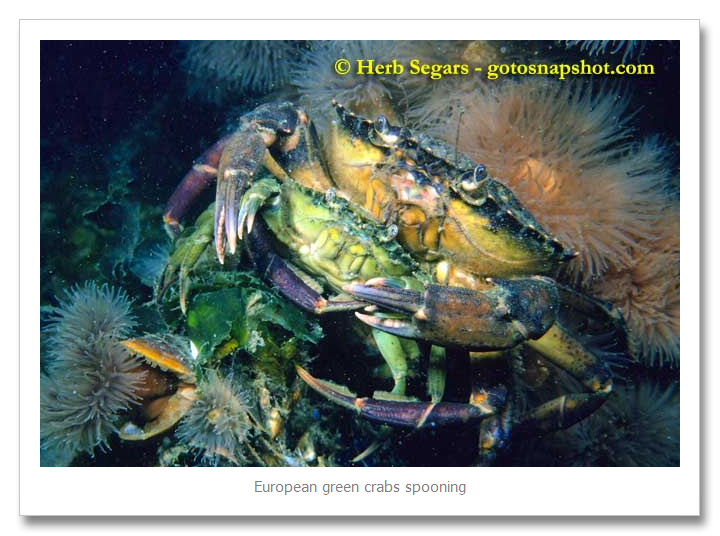
A behavior that I often see in crabs is called “spooning.” The male crab on top holds the female crab underneath it. Both crabs are in an upright position. The male protects the female after she sheds when her shell is soft. This behavior is easily distinguished from crabs mating. When they are mating, the smaller female is in an upside-down position.
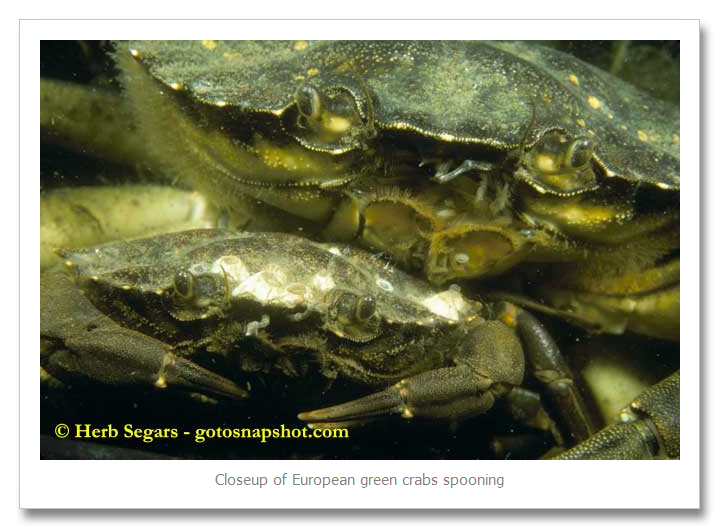
The green crab can be found as far north on the eastern coast of the United States as Maine. Some fishermen in Maine are certain that green crabs are responsible for lower numbers of crabs and oysters. They are also concerned that the green crabs may turn to lobsters if they cannot find sufficient clams or oysters.
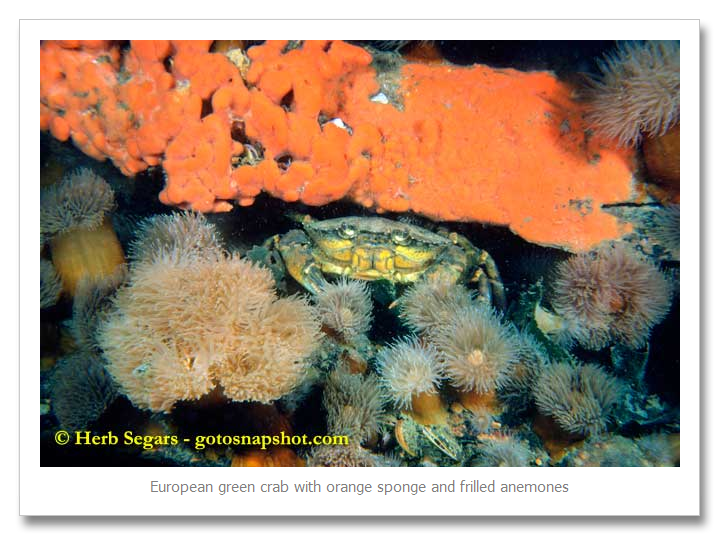
European green crabs are an invasive species that deserves watching. Along the New Brunswick, Canada, coastline, the number of green crabs have spiked in the last few years. The Shediac Bay Watershed Association saw increases in the seining traps in just two years. Where seven were collected in a trap in 2010, more than 550 were found in 2012. One of the concerns about the increase in green crabs is the decimation of eel grass beds as the crab digs up the bottom looking for its favorite meal of clams.
© 2014, Herb Segars. All rights reserved.

